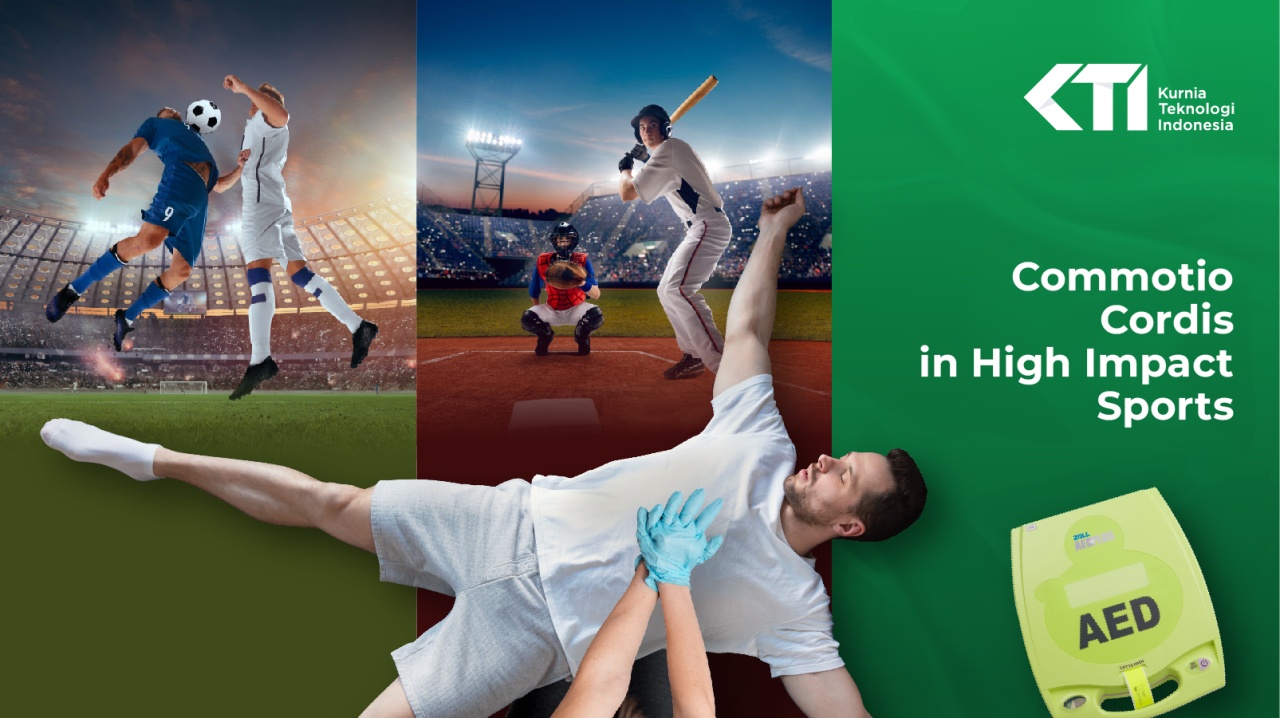Commotio Cordis in High Impact Sports
What is Commotio Cordis
Commotio cordis, also known as sudden cardiac arrest in sports caused by a direct blow to the heart. It typically occurs in young and otherwise healthy individuals, and is a leading cause of sudden death in athletes participating in high-contact sports, such as martial arts (pencak silat, taekwondo, muay thai, karate, etc), baseball, and football. The blow to the chest causes a disruption in the electrical activity of the heart, leading to ventricular fibrillation and sudden cardiac arrest.
Commotio cordis is a rare but potentially fatal condition that occurs when the heart is hit with a sudden, blunt blow. The impact disrupts the heart's normal electrical activity, leading to a life-threatening arrhythmia called ventricular fibrillation. The condition is considered a medical emergency, and prompt treatment is essential to avoid severe injury or death.
The heart is a complex organ that requires a precise balance of electrical signals to maintain a regular rhythm. When the heart is hit with a blunt force, such as a ball or a stick or kick from martial arts, the electrical signals can become disrupted, leading to arrhythmias.
Ventricular fibrillation is a particularly dangerous arrhythmia that occurs when the heart beats in a rapid, chaotic pattern that is unable to pump blood effectively. This can lead to cardiac arrest and death in a matter of minutes if not treated immediately.
The Symptoms of Commotio Cordis
The symptoms of commotio cordis can include sudden chest pain, a feeling of tightness or pressure in the chest, shortness of breath, and loss of consciousness. In some cases, the person may go into cardiac arrest immediately following the impact.
There is currently no cure for commotio cordis, but prompt recognition of the condition and initiation of appropriate treatment can greatly improve outcomes. Treatment typically involves cardiopulmonary resuscitation (CPR) and defibrillation to restore normal heart rhythm.
It is important for coaches, athletes, and anyone involved in sports to be aware of the risk of commotio cordis and to take steps to prevent it from occurring. This may include wearing appropriate protective gear, such as chest protectors, and ensuring that all athletes receive adequate training in CPR and emergency response procedures.
Cardiac arrest, in general, is a condition where the heart suddenly stops beating, and can be caused by a variety of factors, including commotio cordis, heart disease, and trauma. When a person experiences cardiac arrest, they will suddenly lose consciousness and will stop breathing. Without prompt medical attention, death can occur within minutes.
AED for Help
Automated external defibrillator (AED) is portable devices that can be used to deliver an electric shock to the heart in an attempt to restore a normal heart rhythm. AEDs are designed for use by laypeople and do not require medical training to operate. They are becoming increasingly common in public places, such as schools, sports facilities, and airports, and can be a valuable tool in the event of sudden cardiac arrest.
In order to increase the survival rate of individuals who experience sudden cardiac arrest, it is important to be prepared and trained in basic life support techniques, including CPR and the use of AEDs. In addition to CPR, the use of AEDs can help to restore a normal heart rhythm and improve the chances of survival.
It is also important to be aware of the signs and symptoms of sudden cardiac arrest, including sudden collapse, loss of consciousness, and absence of normal breathing and pulse. If you witness someone experiencing sudden cardiac arrest, it is important to call emergency services immediately and to begin performing CPR if trained.
In addition to providing basic life support, it is also important to provide the individual with timely and appropriate care, including the administration of CPR, defibrillation with an AED, and the provision of advanced life support by healthcare providers. The survival rate of individuals who experience sudden cardiac arrest can be greatly improved with prompt and appropriate care.
It is also important to be aware of the risk factors for sudden cardiac arrest, including a family history of heart disease, personal history of heart disease, smoking, high blood pressure, and obesity. Individuals with these risk factors should consult with healthcare professional to assess their risk for sudden cardiac arrest and to develop a plan for reducing their risk.

